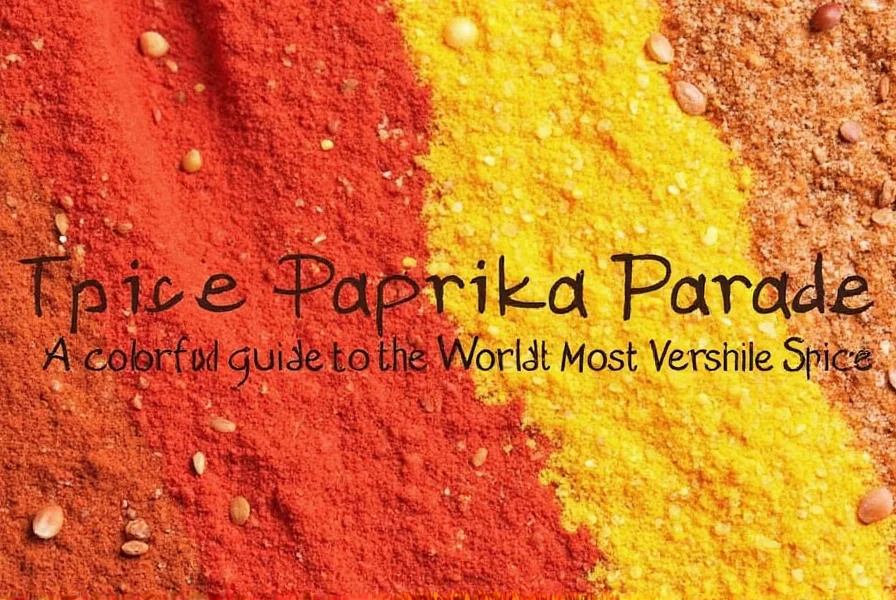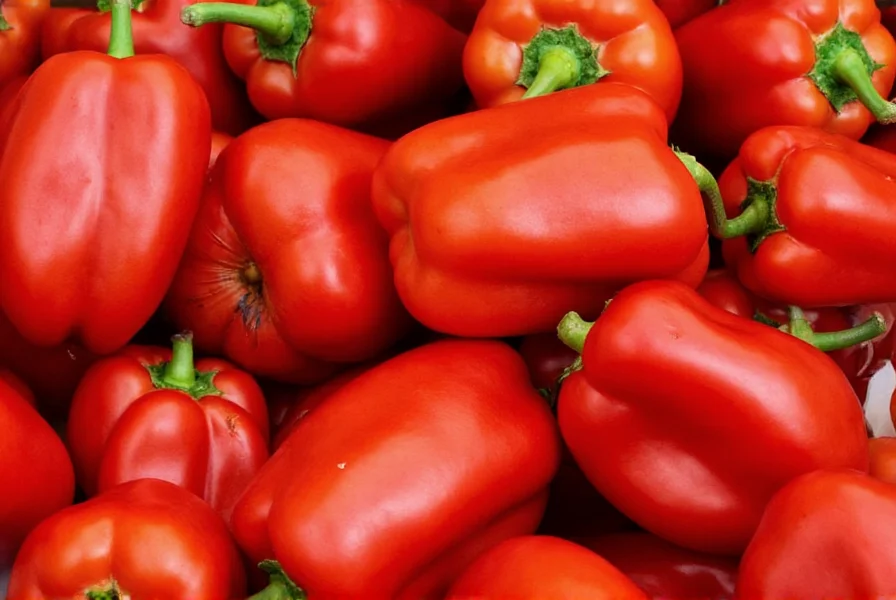Health Benefits of Paprika: Vitamin C, Antioxidants & More
Did you know your spice rack might also be a wellness cabinet? Paprika contains several beneficial compounds:
- Vitamin C: Surprisingly high content—more than citrus! According to the USDA National Nutrient Database, 1 tablespoon of paprika provides about 10% of the daily recommended vitamin C intake.
- Beta-Carotene: Converts to vitamin A, important for vision and skin health. Research shows beta-carotene in paprika may help reduce the risk of certain eye diseases.
- Antioxidants: Fights free radicals and reduces inflammation. A study published in the Journal of Agricultural and Food Chemistry found paprika has high antioxidant activity.
- Capsaicinoids: In hotter versions, supports metabolism and pain relief.
So, not only does it make your food look prettier—it also boosts your nutrient intake without any guilt.
What Are Paprika Peppers?
Let's start at the beginning—what exactly is a paprika pepper? Contrary to what some may think, paprika isn't just one type of pepper. It's a blend or a single variety of dried, ground peppers from the Capsicum annuum family.
The name "paprika" comes from the Hungarian word paprika, which itself derives from the Serbian or Croatian papar (pepper), and ultimately from the Latin piper. So yes, paprika has roots that run deep in both language and culture.
The Many Faces of Paprika: Types and Flavors
If you think paprika is just red powder in a jar, think again! There are numerous types of paprika, each with its own flavor profile, heat level, and culinary use. Here's a breakdown:
| Type | Origin | Flavor Profile | Heat Level (SHU) | Best For |
|---|---|---|---|---|
| Sweet Paprika | Hungary | Mild, earthy, slightly sweet | 0–500 | Garnishing, soups, stews |
| Smoked Paprika (Pimentón) | Spain | Smoky, rich, slightly sweet | 100–1,000 | Grilled meats, paella, roasted vegetables |
| Hot Paprika | Hungary/Serbia | Spicy, bold, pungent | 1,000–5,000 | Goulash, spicy sauces, marinades |
| Spanish Paprika | Spain | Fruity, mild to moderate | 100–1,000 | Rice dishes, tomato-based sauces |
| American Paprika | USA | Less intense, slightly bitter | 0–500 | Cheap bulk blends, coloring agent |
The differences can be subtle but crucial, especially when you're trying to nail a specific regional dish like Spanish chorizo or Hungarian goulash.
How to Use Paprika in Cooking
Practical Tips for Using Paprika Like a Pro
- Toast it first: Paprika becomes more aromatic when briefly heated in oil or dry-fried before adding other ingredients.
- Don't overdo it: A little goes a long way, especially with smoked or hot varieties.
- Pair wisely: Paprika loves garlic, tomatoes, citrus, and creamy bases like sour cream or yogurt.
- Use as a garnish: Sprinkle on deviled eggs, hummus, or finished stews for a pop of color and flavor.
- Add late in cooking: To preserve its vibrant color and volatile oils, add it near the end of the cooking process.

From simple snacks to complex slow-cooked dishes, paprika elevates everything it touches.
Buying Guide: Choosing the Right Paprika for You
Shopping for paprika can be confusing. Here's a guide to help you pick the perfect jar:
1. Know the Type You Need
- For color and mild flavor: Choose Sweet Hungarian Paprika.
- For smoky depth: Go for Smoked Pimentón from Spain.
- For kick: Opt for Hot Paprika (check origin for intensity).
2. Check Quality Factors
- Color vibrancy: Bright red means fresh and potent.
- Ingredients list: Should only contain ground peppers (no fillers).
- Packaging: Airtight, opaque containers preserve freshness.
Top Picks by Use Case
| Product | Features | Advantages | Best For | Occasion |
|---|---|---|---|---|
| La Dalia Sweet Paprika | Natural drying, no additives | Mild, versatile, great color | Everyday cooking | Weeknight meals |
| La Flor Pimentón Dulce | Mild smoked, traditional process | Rich aroma, excellent for paella | Spanish cuisine | Dinner parties |
| McCormick Hot Paprika | Blended for consistent heat | Bold, reliable spice kick | Stir-fries, marinades | Quick meals |
| Penzey's Spanish Smoked | Slow-smoked oak wood | Deep smokiness, ideal for BBQ | Outdoor grilling | Summer cookouts |
Growing Your Own Paprika Peppers
If you're feeling adventurous—or just want total control over your paprika—you can grow your own peppers!
Step-by-Step Guide to Growing Paprika Peppers
- Choose the right seeds: Look for varieties labeled as "paprika peppers" or "Hungarian wax peppers. "
- Start indoors: Plant seeds 6–8 weeks before last frost in well-draining soil.
- Transplant outdoors: Once soil warms and all danger of frost has passed.
- Provide full sun: At least 6–8 hours daily is ideal.
- Harvest when mature: Fully colored peppers are best for drying and grinding.

Once harvested, dry them using a dehydrator or hang them in a warm, airy place. Then grind into powder with a spice grinder or mortar and pestle.
Frequently Asked Questions About Paprika Peppers
What is the difference between paprika and chili powder?
While both come from dried peppers, paprika is typically made from specific sweet or mild peppers and has a more nuanced flavor profile. Chili powder is usually a blend of various chilies plus other spices like cumin and garlic powder. Paprika tends to be smoother and less complex than chili powder, which is formulated specifically for dishes like chili con carne.
How long does paprika last?
Properly stored paprika maintains its best quality for 2-3 years. While it won't spoil, it will gradually lose its vibrant color and flavor intensity over time. For optimal freshness, store in an airtight container away from light and heat.
Is all paprika spicy?
No, paprika ranges from completely sweet and mild to quite hot. Sweet Hungarian paprika has almost no heat (0-500 SHU), while hot paprika can reach 1,000-5,000 SHU. The heat level depends on the pepper varieties used and should be clearly labeled on the packaging.
What can I use as a substitute for paprika?
For sweet paprika, try a mix of cayenne pepper and tomato paste (use sparingly). For smoked paprika, a small amount of chipotle powder with a touch of liquid smoke can work. For color without flavor, tomato powder or beet powder might suffice. However, each substitute will change the dish's flavor profile.
How should I store paprika to keep it fresh?
Store paprika in an airtight container away from light, heat, and moisture. A dark cupboard is better than clear containers on a spice rack. For longest shelf life, consider keeping it in the refrigerator or freezer in a properly sealed container to prevent moisture absorption.
Does paprika have significant health benefits?
Yes! Paprika is rich in vitamin C (more than citrus fruits), beta-carotene (which converts to vitamin A), and various antioxidants. Hotter varieties contain capsaicinoids which can support metabolism and provide pain relief. It adds nutritional value while enhancing flavor without extra calories.
Conclusion
Whether you're spicing up your weekly dinner or diving into global cuisines, paprika peppers are an essential ingredient that brings flavor, color, and even nutrition to the table. Understanding the different types, how to use them, and where to source quality paprika empowers you to cook with confidence and creativity.
So next time you reach for that dusty jar in the back of your pantry, give paprika a second thought. It might just be the unsung hero of your kitchen!










 浙公网安备
33010002000092号
浙公网安备
33010002000092号 浙B2-20120091-4
浙B2-20120091-4